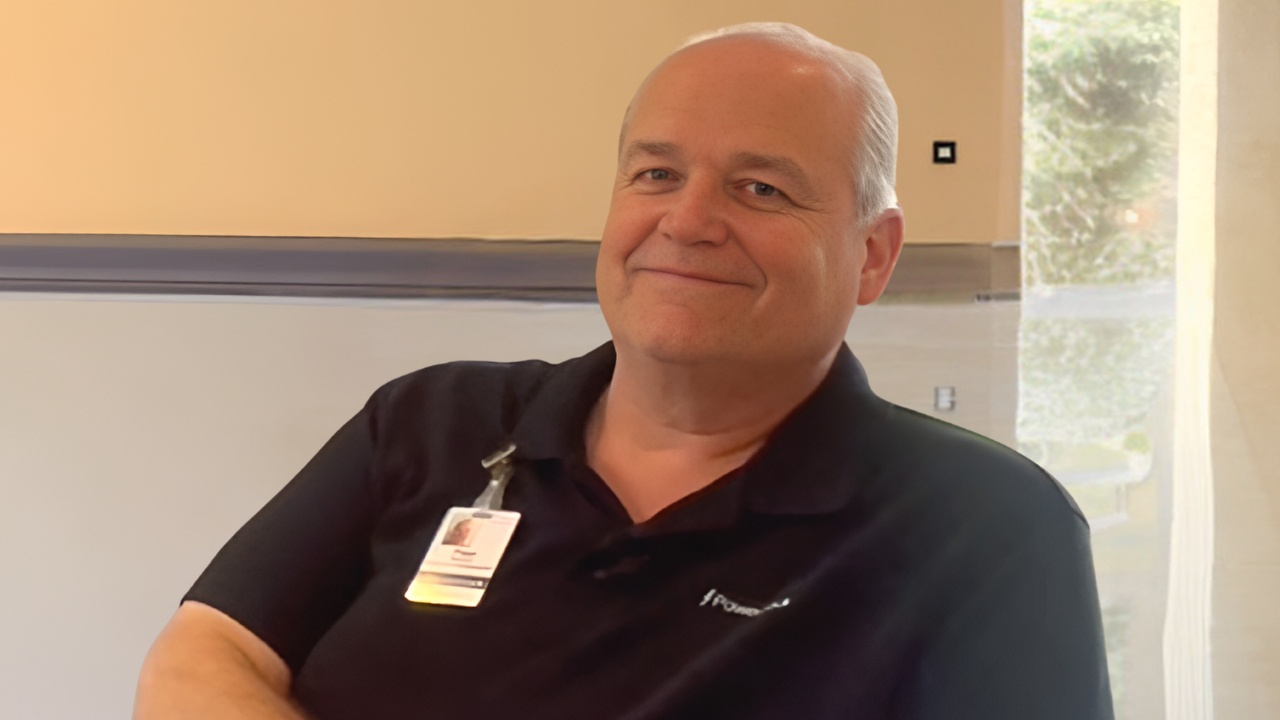We are honored to have Paul Martinet, the Director of Therapy at Aspire of Palma Sola Bay, as a special guest. Paul oversees a dedicated team of therapists, including occupational therapy professionals, who play a crucial role in patient recovery and rehabilitation.
In this video, Paul explains the comprehensive evaluation process for patients in need of occupational therapy. He highlights the importance of activities of daily living (ADLs) and the tailored approaches used to ensure patients can return home safely and independently.
A special thank you to Paul and his team for their commitment to enhancing the quality of life for our community members through skilled therapy and personalized care.
Let's celebrate the hard work and dedication of all occupational therapy professionals under Paul's leadership at Aspire of Palma Sola Bay. Their efforts ensure a seamless transition from hospital to home, empowering patients to achieve independence.
#OccupationalTherapyMonth #AspireOfPalmaSolaBay #TherapyLeadership #CommunityCare
Transcript
[Jonathan] Hey, everyone. April is National Occupational Therapy Month, and this month, we're stressing the need for occupational therapy, especially for those who are being discharged from a facility and going home. Today I have with me Paul Martinet with Aspire at Sola Bay, a local skilled nursing facility here in Bradenton. Thank you for joining us, Paul.
[Paul] Thank you, gentlemen. A pleasure to be here. Thank you.
[Jonathan] Thank you. So the question I have for Paul today is, how do you evaluate your patients here and their need for occupational therapy?
[Paul] All right. First of all, when we get any patient in from a hospital stay, they're automatically going to get an occupational therapy evaluation. A lot of people don't understand what occupational therapy entails when they hear, "I'm going to a rehab center for therapy." Everyone tends to jump to physical therapy. "Oh, they're going to get me up. I'm going to walk. I'm going to get my legs moving stuff." Occupational therapy is just as important as physical therapy.
What occupational therapy focuses on is what we call the ADLs or Activities of Daily Living. So dressing, bathing, being able to take care of your medication management, reading recipes, being able to cook, things like that. Why those things are overlooked when people think of going to a rehabilitation center? So every new patient that comes in, we automatically evaluate them for those areas. The occupational therapists will assess, and see how well they're able to take on and off their shoes, and their shirts, how well they're able to bathe themselves, which would also include brushing their teeth, brushing their hair, things like that, things that we normally take for granted until something happens and then you wind up in the hospital.
Also, occupational therapy will work on some upper body strengthening and fine motor movement. The range of what they work on is really wide. They work on writing, making sure you're able to write out checks and things like that. So our goal here is to get people home as safely and independently as possible. So when we do the evaluation, we establish goals depending on where we see the deficiencies. And we go back to the patient's history to see what they were able to do prior to being in the hospital. And we really like to tailor those goals to make those patients as independent as possible, as their number one goal is a safe discharge.
And then after we're done working with them here on those goals and they're ready to go home, more than likely, we're going to recommend home health occupational therapy, which is also great because it allows that therapist to go into the patient's home environment and do an assessment of their environment. Okay, I would move this chair, move this couch, and watch out for these throw rugs. They'll have the patient in the kitchen, put him through their paces, in their own kitchen, seeing how well they're able to cook and manage for themselves. So they said we want to ensure and we work with a lot of home health companies. They'll come and they'll ask us, "How's this patient doing before they go home?" So we can have a smooth continuum of care from hospital to here and then transfer back home to their home environment and hopefully, ideally, get them home as independently as possible.
[Jonathan] Thank you, Paul, for providing this education for our audience. I have to say, Paul has been here at Inspire at Palma Solar Bay for what's coming up on 17 years. So he definitely knows what he's talking about. We've had many of our clients come here for their skilled nursing needs. So if you need any skilled nursing, if you're being discharged from a hospital, need to go to a skilled nursing facility, please think of Aspire at Sola Bay. Thank you for joining us and thank you for all you do.
[Paul] We love Jonathan. We have a lot of patients too. I mean, they do an excellent job.
[Jonathan] Thank you, Paul. All right. Thank you, everyone. And until next time, we'll see you. Aspire at Palma Solar Bay is a local skilled nursing facility in Bradenton, Florida. To learn more, please visit their website or use the information on the screen to contact Aspire at Palma Solar Bay directly.
HOME HELPERS OF BRADENTON
Home Helpers of Bradenton is one of the region's leading home care franchises specializing in comprehensive services for seniors. Home Helpers' sole mission is to make life easier for clients and their families. Based in Bradenton, Florida, the company serves all of Manatee County, including the communities of Anna Maria, Bradenton, Bradenton Beach, Ellenton, Holmes Beach, Lakewood Ranch, Longboat Key, Palmetto, and Parrish. For more information or to request a free in-home care assessment, contact our office at (941) 499-5946 or visit our website at www.homehelpershomecare.com/bradenton

